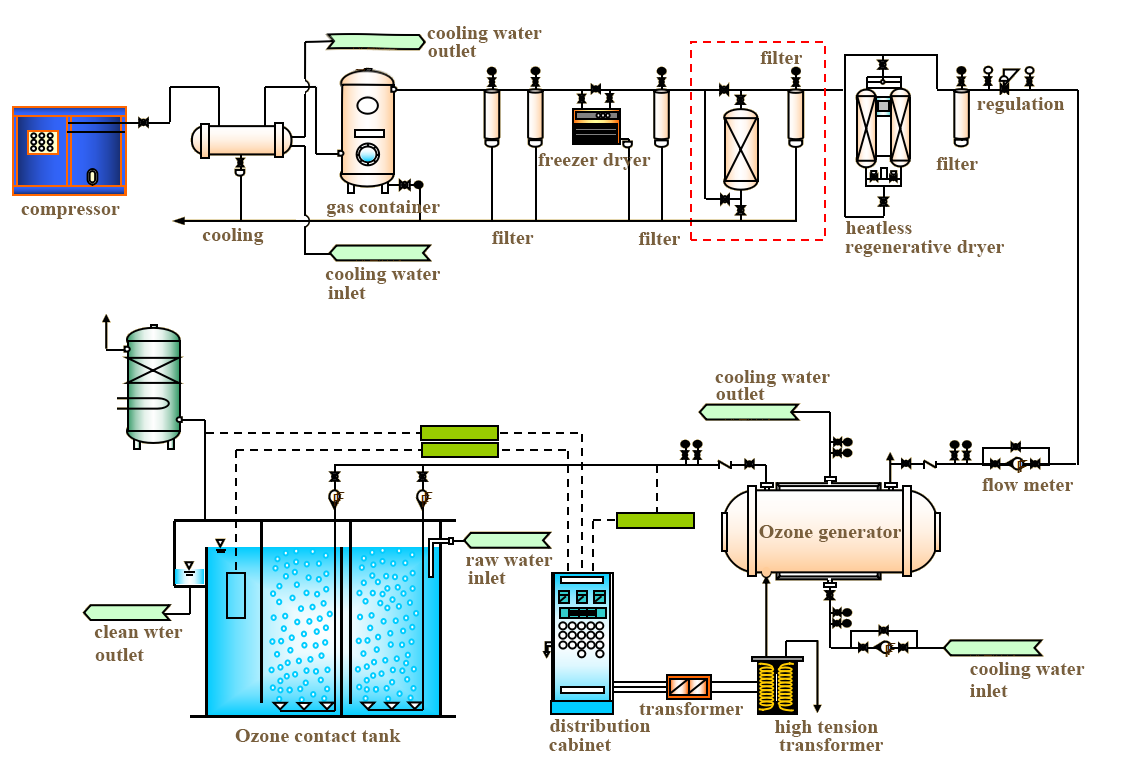- ⏩ The principle of ozone catalytic oxidation technology is to pass ozone gas through the catalyst bed in the reactor to decompose ozone to produce free oxygen radicals and ozone molecules. Free oxygen radicals are highly reactive oxidative species that can react with and degrade organic pollutants. Chemical agents can increase the reaction rate and reduce the required ozone concentration, thereby improving treatment efficiency. This technology is widely used in water treatment, especially for organic pollutants that are difficult to degrade and has good treatment effects.
- ⏩ How to improve the removal efficiency of ozone catalytic oxidation:
- In the ozone catalytic oxidation process, key factors include ozone concentration, reaction time, water pH, temperature, and catalyst type and loading. Optimizing these factors can improve organic matter removal efficiency and reaction rate.
- ⏩ Advantages
- ↘️ efficiently degrade refractory organic pollutants through the synergistic effect of ozone oxidation and catalysts,
- ↘️ has certain applicability to various organic pollutants, including dissolved organic compounds, volatile organic compounds and toxic organic compounds,
- ↘️ will decompose into oxygen during the catalytic oxidation process, and without secondary pollution problem,
- ↘️ can be applied alone or combined with other water treatment technologies to meet different water quality and treatment requirements.
- ⏩ Challenges
- Ozone catalytic oxidation technology also has some challenges, such as catalyst selection and stability, operating cost and energy consumption considerations. Therefore, in practical applications, various factors need to be comprehensively considered and reasonable process design and operation control carried out.

Deep processing for sewage treatment-Ozone oxidation technology
Facebook
Pinterest
Twitter
LinkedIn
lucky
Latest Article
12/02/2024
No Comments
10/12/2024
No Comments
10/12/2024
No Comments
10/12/2024
No Comments
10/12/2024
No Comments
Related Article
Deep processing for sewage treatment-Ozone oxidation technology
01/17/2025
No Comments

Water treatment
12/02/2024
No Comments

what’s wastewater treatment plant
10/12/2024
No Comments

what is wastewater treatment equipment
10/12/2024
No Comments

Environmental Protection Development Status report, JiangEnvironmental Protection ranksamong the top 50 enterprises in the domestic environmentalprotection industry.
Contact Us
Sign up our newsletter to get update news and article about company.
Copyright © 2022 LUCKYWATER, All rights reserved.

